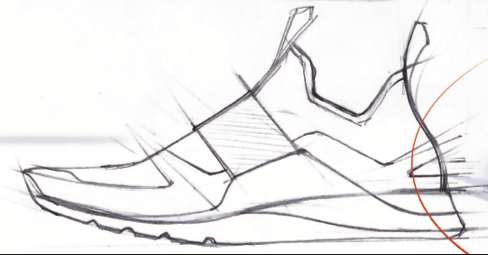Become A Better Shoe Designer
1. Mastering the art of sketching and rendering shoe designs allows you to effectively communicate your ideas visually, capturing the essence of your design concepts and facilitating effective collaboration with manufacturers and clients.
2. Developing a deep understanding of shoe anatomy and footwear construction techniques is essential for creating well-designed and structurally sound shoes that offer both style and comfort to the wearer.
3. Studying and analyzing the work of renowned shoe designers provides valuable inspiration and insights into their design processes, helping you learn from their techniques, aesthetics, and attention to detail. Nike and Adidas have a long history of innovation, it’s worth your time and effort to explore our shoemaking past.
4. Staying updated with the latest trends in fashion, materials, and technology related to shoe design ensures that your creations remain relevant and appealing to the ever-changing market and consumer demands – looking at automotive design and other sporting goods categories will help you find new inspiration.
5. Exploring different shoe design software and tools enhances your design process by enabling you to experiment, iterate, and visualize your ideas more efficiently, leading to improved design outcomes. Built your skills working with 2D and 3D design tools, but don’t forget your hand sketching skills!
6. Experimenting with various materials, textures, and finishes enables you to push creative boundaries, discover innovative approaches, and create shoes that stand out with unique aesthetics and tactile experiences.
7. Understanding the ergonomics and biomechanics of shoe design is crucial for creating shoes that not only look good but also provide optimal comfort, support, and functionality, promoting foot health and well-being.
8. Attending footwear design workshops, seminars, or online shoemaking courses provide opportunities to learn new techniques, gain industry insights, and expand your skill set, allowing you to continuously improve as a shoe designer.
9. Collaborating with footwear professionals from related fields, such as materials engineering or manufacturing, offers a multidisciplinary approach that enhances your understanding of the technical aspects and possibilities of shoe design. Networking with other shoe designers and industry professionals creates a platform for knowledge sharing, idea exchange, and potential collaborations, fostering growth, and exposure within the industry
10. Participating in footwear quality inspections can make you a better designer by providing firsthand exposure to potential manufacturing issues, material limitations, and quality control standards. This experience enhances your understanding of production processes and helps you design shoes.
New Online Courses
for Brand Builders
11. Seeking feedback and critique from mentors, peers, and potential customers provides valuable insights and constructive criticism, enabling you to refine your shoe designs and address any shortcomings or areas of improvement. Finding and old shoe dog to review your work is a great way to gain knowledge. Seeking mentorship from experienced shoe designers who can provide guidance, share their wisdom, and offer insights into the industry empowers you with valuable advice and support as you navigate your career path as a shoe designer.
12. Taking part in shoe design competitions or challenges challenges your creativity, encourages innovation, and pushes you to explore new design territories, helping you refine your skills and gain recognition within the industry.
13. Keeping a sketchbook or design journal allows you to capture new shoe ideas, concepts, and inspiration on-the-go, ensuring that you never miss out on your flashes of creativity that can later be developed into full-fledged shoe designs.
14. Traveling and exploring different cultures and their footwear traditions exposes you to diverse design influences, materials, and craftsmanship techniques, broadening your design perspective and enriching your creative repertoire.
15. Developing a strong understanding of color theory and its application in shoe design allows you to create visually harmonious and aesthetically pleasing color schemes that evoke the desired emotions, moods, or brand identities within your designs.
The Ultimate Shoe Material Textbook
16. Embracing sustainable and eco-friendly design practices, such as incorporating recycled materials or exploring alternative manufacturing methods, demonstrates a commitment to environmental responsibility and appeals to a growing segment of conscious consumers.
17. Constantly analyzing and evaluating market trends and consumer preferences enables you to design shoes that are not only visually appealing but also aligned with the evolving demands and desires of your target audience.
18. Developing your own signature design style or aesthetic helps you carve out a unique identity in the industry, distinguishing your work from others and allowing you to establish a recognizable brand or design persona.
19. Analyzing and dissecting competitor shoes is a great way to expand your footwear knowledge base and apply those learnings to enhance your own designs. This hands-on approach helps you gain a deeper understanding of various construction methods, stitching techniques, material choices, and even potential areas for improvement.
20. Staying curious, passionate, and committed to continuous learning and improvement in your craft as a shoe designer is crucial for personal and professional growth, ensuring that you stay at the forefront of design trends and maintain a competitive edge.


This information is so valuable in order for me to choose the right starting point in this field of shoemaking. I will be doing more research and getting more information before I begin. I WILL BE INVOLVED IN A CLASS SOON! THANKS